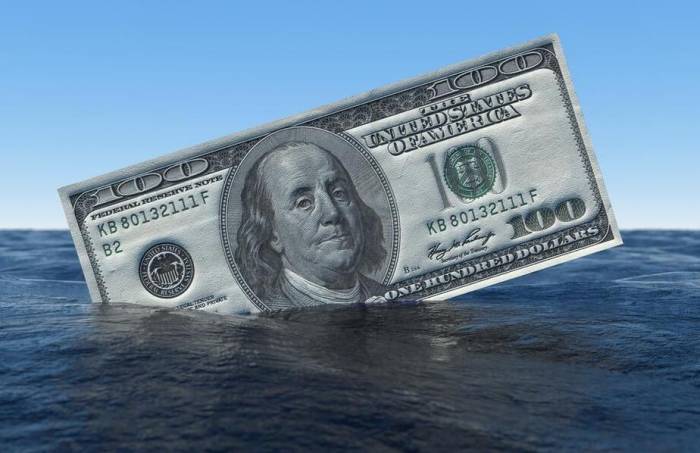The vast majority of international investors have incorporated climate or carbon emission factors into their investment decision-making considerations.
However, only 4% of these investors believe that current asset prices have largely reflected climate risks.
Against the backdrop of record U.S. oil production, declining electric vehicle sales, political resistance to net-zero policies, and a series of global crises occurring in succession, the market is increasingly worried that progress in addressing climate change has stalled.
Unless governments and industries regroup, this pessimism about the climate is likely to become a self-fulfilling prophecy.
The Asia-Pacific region has prioritized climate-related investments.
Although governments should be responsible for setting policies that incentivize decarbonization, the private sector will not simply wait for government action.
A recent survey led by Stanford University and the MSCI Sustainability Institute shows that the vast majority of international investors have factored climate or carbon emissions into their investment decisions.
Advertisement
However, only 4% of these investors believe that current asset prices have substantially reflected climate risks.
The global economy's transition to net-zero will require the largest-scale reconfiguration of capital and repricing of assets in history, a process driven by the financial and investment sectors.
As international markets seek to balance climate mitigation and adaptation, climate-related investments will vary by region, but the Asia-Pacific has already made it a priority.
A report published by the Asia Investor Group on Climate Change (AIGCC), supported by MSCI, shows that 70% of Asian investors (including 84% of asset management companies) currently "recognize climate as one of the significant sources of risk and opportunity."
Moreover, 57% of Asian investors (including 68% of asset management companies) have integrated climate factors into their investment decisions.
The climate situation in the Asia-Pacific reflects its economic diversity.
The region's greenhouse gas emissions account for a large share of the global total, and its coal-fired power generation is even more dominant globally.
However, this has greatly promoted low-carbon and green innovation in the Asia-Pacific.
To achieve the net-zero emission target by 2050, the Asia-Pacific region will need to invest over $70 trillion.
Recently, a research report released by MSCI shows that Asia-Pacific companies have become major players in the field of clean technology innovation.
For example, industry-leading companies in the Asia-Pacific region have begun to use their supply chains to expand the deployment of clean technology and accelerate the development of cutting-edge technologies.
Most notably, China has become the global leader in the renewable energy sector and is also the world's largest electric vehicle market.
In addition, Japan has become a global leader in climate finance and clean energy research, while South Korea currently ranks among the top five countries in the world for low-carbon nuclear power production.
Looking ahead, the Asia-Pacific region has tremendous potential in promoting the development of carbon capture, utilization, and storage (CCUS) technology.
McKinsey estimates that by the middle of this century, the application of CCUS technology in the Asia-Pacific region will account for 55% of the global total.

In terms of voluntary carbon markets, MSCI research shows that the issuance of carbon credits in the Asia-Pacific region has risen sharply since 2014, with India, China, Australia, and Indonesia being leading markets.
At the same time, at the capital market level, both Singapore and Hong Kong are actively striving to become the premier climate investment hubs in the Asia-Pacific region.
Faced with the enormous challenge of net-zero emissions and the need to accelerate the decarbonization process, Asian countries need to speed up climate action to achieve the global net-zero emission target.
A research report commissioned by the Asia Society Policy Institute shows that the Asia-Pacific region will need to invest more than $70 trillion cumulatively to achieve the net-zero emission target by 2050.
Climate financing opportunities are extensive, and investment opportunities are continuously growing.
Last year, The Boston Consulting Group and the Rockefeller Foundation conducted a survey of over 100 leaders in the field of climate finance, revealing the challenges and potential in net-zero emission investments.
In terms of challenges, the survey emphasized climate investors' concerns about market adversity, such as rising interest rates and overall economic uncertainty; the report also highlighted ongoing obstacles in project development, including foreign exchange risks in emerging economies and policy complexities.
On the positive side, the report points out that "investors in public markets and the private sector generally believe that climate financing opportunities exist in every significant theme and market, and across different regions.
Notably, despite market volatility, these investors still believe that investment opportunities are continuously growing."
In 2023, both the MSCI ACWI Climate Action Index and the MSCI ACWI Climate Change Index outperformed their parent index – the MSCI ACWI Index – by margins of 2.7% and 6.5%, respectively.
In terms of climate investment, there is still a significant gap in data and pricing.
As the availability of high-quality data in the market improves, asset prices can more accurately reflect long-term risks and opportunities, thereby promoting the capital reconfiguration that is crucial for achieving a net-zero economy.
Of course, we cannot predict how the net-zero emission path in the Asia-Pacific region will evolve; but what is certain is that the region's pursuit of this grand goal will continue to have a profound impact on the global investment field.